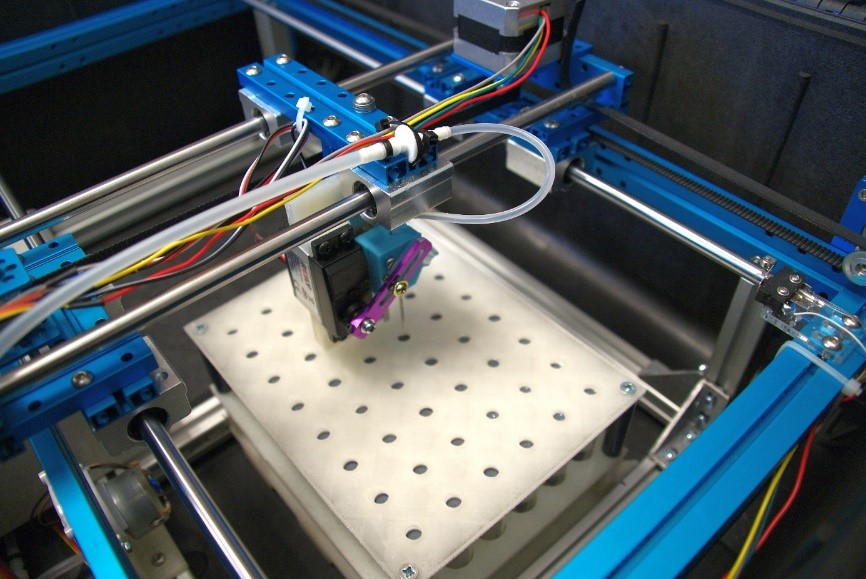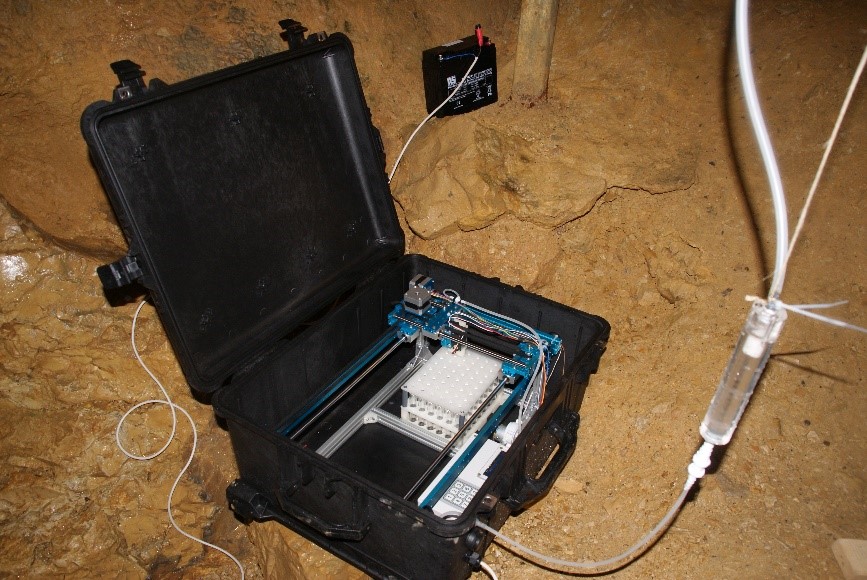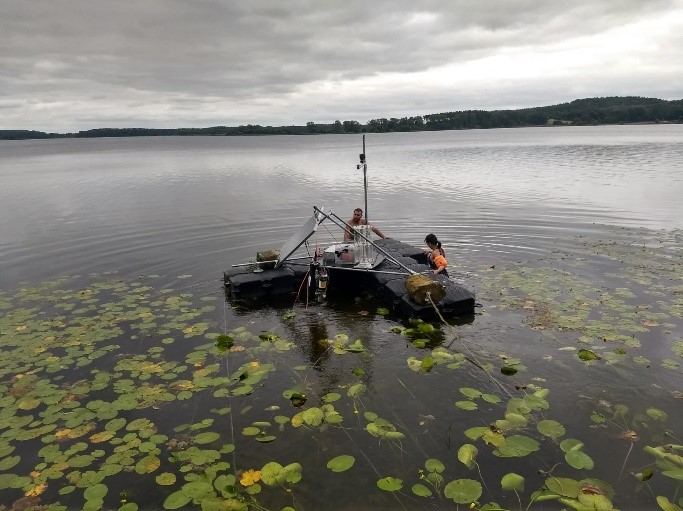Scientific background: Many research questions require analytical or experimental tools far beyond commercially available standard techniques or current state-of-the-art laboratory equipment. For example, some extreme spatio-temporal variations in natural systems, unusual matrices or extremely low or high trace element concentration amounts demand innovative approaches. Furthermore, commercially available loggers and sampling devices are often not reliable under harsh conditions that are present at some of our research locations. Therefore, we continuously develop and adapt sampling and monitoring devices, sample preparation methods, analytical protocols and experimental setups to suit varying natural conditions.
Our strength and some analytical challenges
- Mechatronic workshop with creative and experienced staff
- Time- and depth resolved measurement of physico-chemical and biological parameters (e.g. depth, T, pH, EC, Chl-α) in rivers and lakes including targeted water sampling.
- Continuous sampling of drip or rainwater in remote areas under harsh conditions without contamination or changes in the water isotopic composition.
- Reliable and long-term monitoring of the cave atmosphere, especially pCO2, under extremely humid conditions (100% relative humidity).
Analytical possibilities
- Biofish (Flyer)
- Biolift (Flyer)
- GUARD
- Laboratory for Environmental and Raw Materials Analysis (LERA)
Current research topics and projects
- Development of automated dripwater sampling system for remote areas under harsh conditions
- Improvement of cave atmosphere monitoring using heatable boxes.
- Development of monitoring technologies to study dynamics of water quality in Lake Taihu, China (SIGN-DYNAQUA)
- Development of a smart depth profiling in situ and online multi-sensor buoy system to monitor water quality conditions, as well as algae contents, diversity, and vitality (WAQUAVID).
Selected publications
- Hartmann, A., Luetscher, M., Wachter, R., Holz, P., Eiche, E., Neumann, T. 2.18. Technical note: GUARD – an automated fluid sampler preventing sample alteration by contamination, evaporation and gas exchange, suitable for remote areas and harsh conditions. Hydrol. Earth Syst. Sci., 22, 4281–4293.
- Holbach A., Norra S., Haushahn P., Moldaenke C. 2016. Advanced multi-sensor technologies for effective monitoring in Chinese water bodies. Water Solutions 1, 99-103.



